Kungfu is art and performance. It’s grace and inner power. It’s strength and flexibility. Kungfu is hard and soft. Kungfu is the process of sharpening your body and mind, of finding connection and stillness. Kungfu is hundreds of different styles and schools. It’s philosophy. It’s ancient. It’s holistic. It’s hard work. It’s absolutely beautiful.
I knew nothing about kungfu before I came to China. The only martial arts movie I had ever seen was Kung Fu Panda. I wouldn’t recognize Bruce Lee if he was standing right in front of me, doing one of his signature acrobatic moves and wearing a beanie with his name written on it. (Watching movies wouldn’t have made me much the wiser, but you get what I’m saying). And even now, four months into my training, I’m still trying to make sense of it all.
Because what is kungfu exactly? How do the fighting, the inner power, the stillness of mind and the many different styles and schools, the philosophy and the performance element tie in together? You can ask a hundred practitioners about the meaning of kungfu and you could get a hundred different answers. So for all you interested novices like myself, I’ll take a stab at providing a little insight in the beautiful art of kungfu as I’m disovering it.
The term ‘kungfu’
In the West, the word ‘kungfu’ has become synonymous with ‘Chinese martial arts’. But in reality, the meaning of kungfu (in pinyin: gōngfu) is any skill or practice achieved through hard work, focus and discipline. Painting, writing, rock climbing; it can all be kungfu.
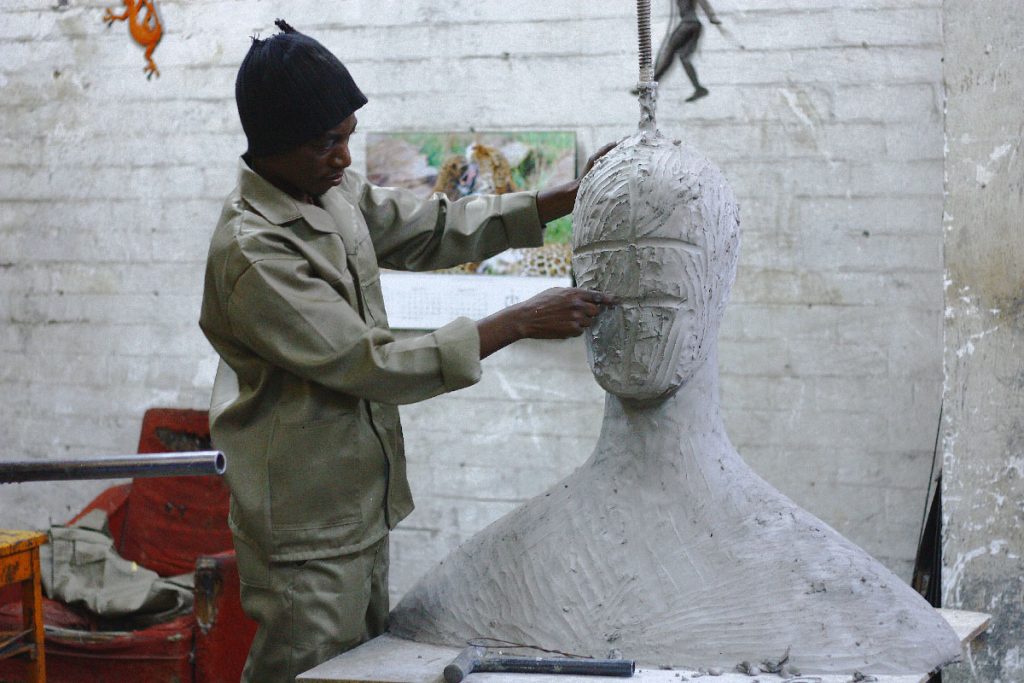
A more appropiate term to refer to Chinese martial arts would probably be ‘wushu’ as ‘Chinese martial arts’ translates in Chinese as ‘zhōngguó wǔshù’, where Zhōngguó refers to China and wǔshù refers to wǔ = ‘martial’ and shù = ‘art’. Note that the word wushu actually refers to all martial arts, not just Chinese ones. To complicate things a little bit further, wushu is also the official term for the modern, competitive sport of wushu. This is different to traditional martial arts as the focus is on aesthetics and less (if at all) on the martial aspect.
I may just have managed to confuse you further, but either way, I digress.
History of kungfu
Chinese martial arts are as ancient as man, originating from the most primitive societies and their need for hunting and self defense. With time skills evolved, were expanded upon and put to military use. It’s said that the legendary Yellow Emperor – born around 2700 B.C. – was the first to implement fighting systems on a national scale.
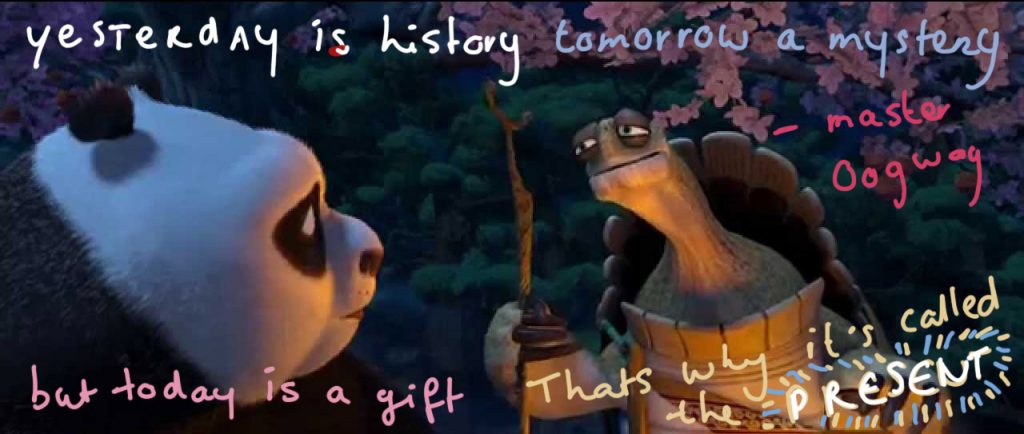
Over the era’s, kungfu developed into something more than just a fighting system. With the evolution of Chinese society, the art of kungfu evolved as well, embracing many aspects from Chinese traditional culture. The framework of kungfu became enriched with philosophical concepts, ethics, traditional Chinese medicine and theories on morality, beauty, rule and life. It became strongly tied to Buddhist and Daoist principles and to Confucianism too (the latter less so).
Out of this rich framework, many many different styles and schools of kungfu sprang and developed seperately from each other. Each of them with its own techniques, methods and concepts. Hundreds of them are practiced all across China and all over the world, as we speak.
Basic goals of kungfu
Every person has their own reasons, their own aspirations, for practicing kungfu. Traditionally, the goal was to defend yourself and to eliminate your opponent. But nowadays we don’t fight wars with sticks, swords or our bare hands anymore. Kungfu style fighting is not a necessity for survival on a national level – all though on an individual level it can come in damn handy of course. And all though kungfu’s fighting roots were never lost, with time more focus was placed on philosophy, morality, ethics, health and perhaps simply just on the concept of how to live your best life and how to become the best version of yourself.
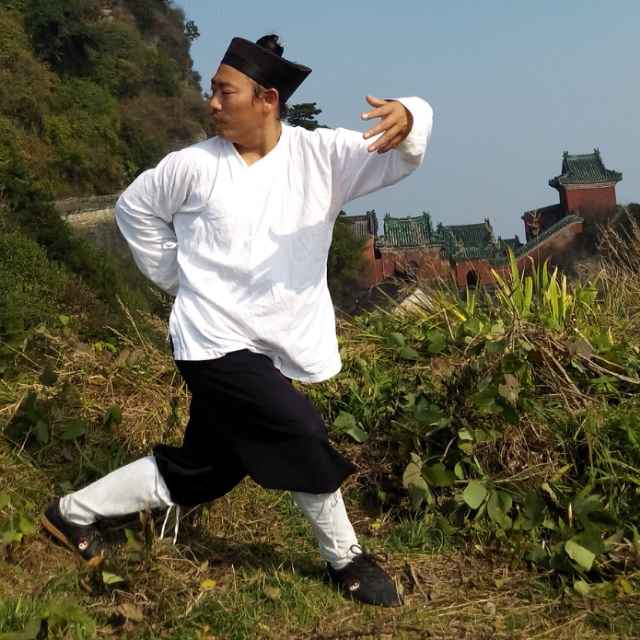
My own goal, for example, is mostly internal, a little bit external and contains an element of performance as well.
To cultivate and grow body, mind and soul through focus, intent and discipline. To learn self defense and cool stuff like wielding a sword.
– My personal goal(s)
There’s something for everyone
There is something in it for everyone, that’s the beauty of it. There is contemporary wushu for the competitor and the performer, there’s the opportunity to learn how to break bricks on your head, there’s the road to finding discipline, inner strength and stillness. Maybe you only want to improve your health and your physique. Maybe a combination of all. You can pick your school and your style and off you go, so to speak.
However, for me personally kungfu is not kungfu anymore when the martial aspect is completely taken out if it. In the West Tai Ji is often perceived as a ‘slow’ and ‘relaxed’ set of movements solely and practiced for health reasons. Which is great. But Tai Ji is a martial art. Every movement has an application. Every motion is an offense or a defense. That’s where Tai Ji’s depth comes from. It’s her foundation and her history. If you leave the martial aspect out of it, it’s not Tai Ji Quan anymore.
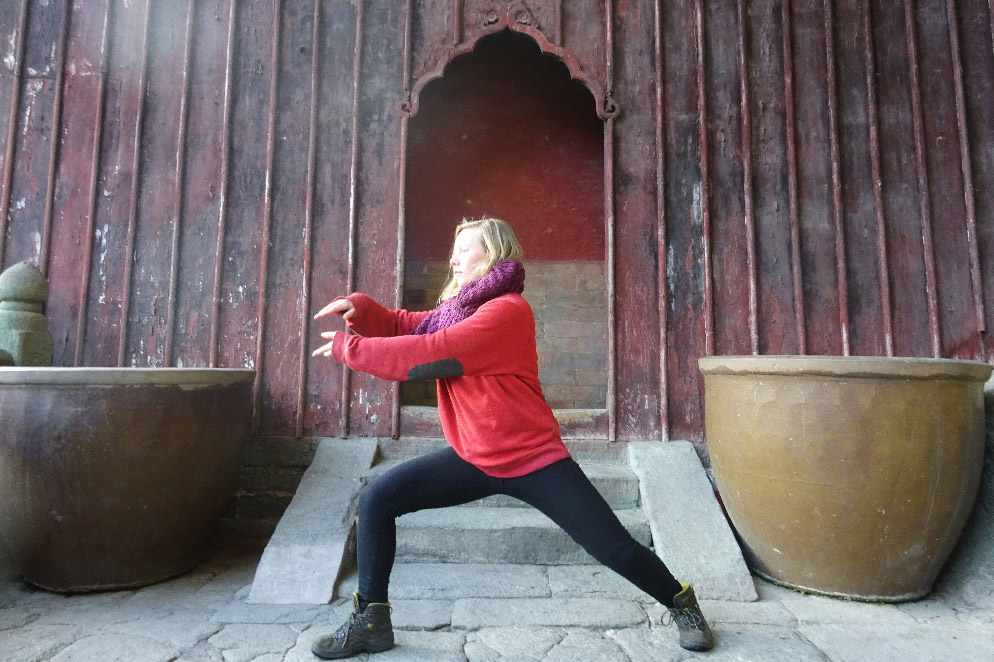
This story can be flipped around: there was a guy here at my school who was intent on learning how to fight. However, he wasn’t able to relax his body, lacked coordination and flexibility. This wasn’t a problem perse, because those skills can be taught and cultivated. The problem was that he ignored all advice from the coaches and even the Shifu himself. You can not learn how to fight if you’re not aware of your body, if you’re not able to control it and – especially – if you can’t muster any self reflection that leads to change. Needless to say, he learned little and left in a bit of a huff.
So that’s the other side. It’s impossible to improve martial skills if you’re not willing to go in depth, if you don’t learn how to focus your mind, how to ‘feel’ your body and if you’re not humble enough to take advice and to put the preliminary work in.
My best practice zone
Personally, I discovered that my best practice is when my body is relaxed, when I am focused on my breath, on my qi and when I make every movement with intent. I try to focus and visualize every application. You kind of get into a zone, a ‘flow’ if you will. It’s a great feeling. I’m usually snapped out of mine rather fast either by my own self doubt or by my coach walking by, shaking her head and sighing ‘Noooooo, Arwen, not like that‘ Hey, a girl’s gotta learn!
The different styles and schools of kungfu
Onto another concept that completely baffled me at the start. The hundreds of different schools, styles and families of kungfu. How to make sense of them all? As I mentioned before, when I arrived in China I knew nothing. I came to a Wudang school, but I didn’t know the meaning of Wudang. I was going to learn the fundamentals of Xing Yi Quan and Bagua Zhang.. wait, Xing Quan what?
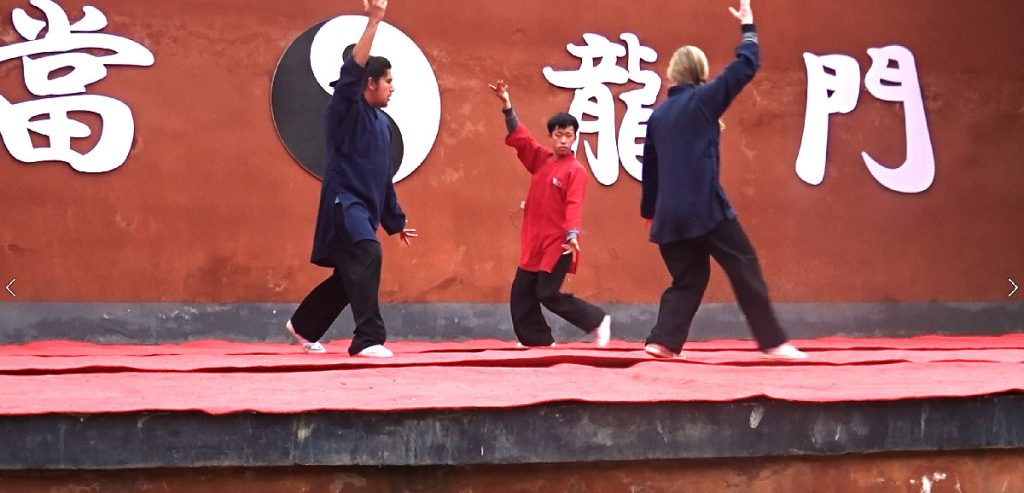
A simple kungfu styles tea allegory
Kungfu is a little bit like tea, in the way that there’s a massive variety of flavours and you’d spend a lifetime trying to sample them all. Different kinds of tea may be categorized into sweet or bitter, black or white, caffeinated or decaf. Different styles of kungfu may be identified as internal or external, Northern or Southern or according to the founder’s name. The list is endless.
And just as people drink tea for different reasons (health, weight loss, comfort), so people practice kungfu for a myriad of reasons. But in the end, whatever the reason and whatever the flavour, tea is tea.
I like my tea black with lots of milk. But here in Wudangshan I haven’t been able to find black tea, so I drink red tea instead and it does the job.

As it is with different types of tea, so it is with different types of kungfu. Everyone likes it a different way and practices it for different reasons. The Chinese kungfu styles are as extensive as the size of their mama’s country and there is a huge variation in technique and method. Some styles are quick and explosive, some styles are soft and controlled. Some styles mimic animal movements. Wudang Quan, which I study, is a class of internal martial arts that can be loosely distinguished by focused engagement of the waist to allow for the free flow of qi. It encompasses internal styles such as Tai Ji, Xing Yi Quan and Bagua Zhuang.
I practice the above styles under the Wudang denominator, but don’t let that confuse you. All these styles are absolute styles in themselves and practiced all over the world independently.
So how do styles develop?
Styles of kungfu have both come into existence and changed throughout time due to a lot of different factors, such as weather, environmental conditions, social conditions, war, the necessity for hunting, etcetera. I’ll give you a few examples.
It’s the year 1319 and you’re a Chinese farmer living in a northerly province of China. You need to defend yourself against foreign invasions and wolves. Your kungfu style needs to fit the conditions of your environment (snowy and cold). A style that includes a lot of high jumps and kicks would be very unpractical. Rather you would develop (or develop upon) a style that is focused on stability and precision in a close range.
Or imagine that you’re a disciple and your master dies before he was able to complete his teachings to you. Now it’s up to you to complete the formation of the style based on the experience and knowledge that you have. Thus the style will change.
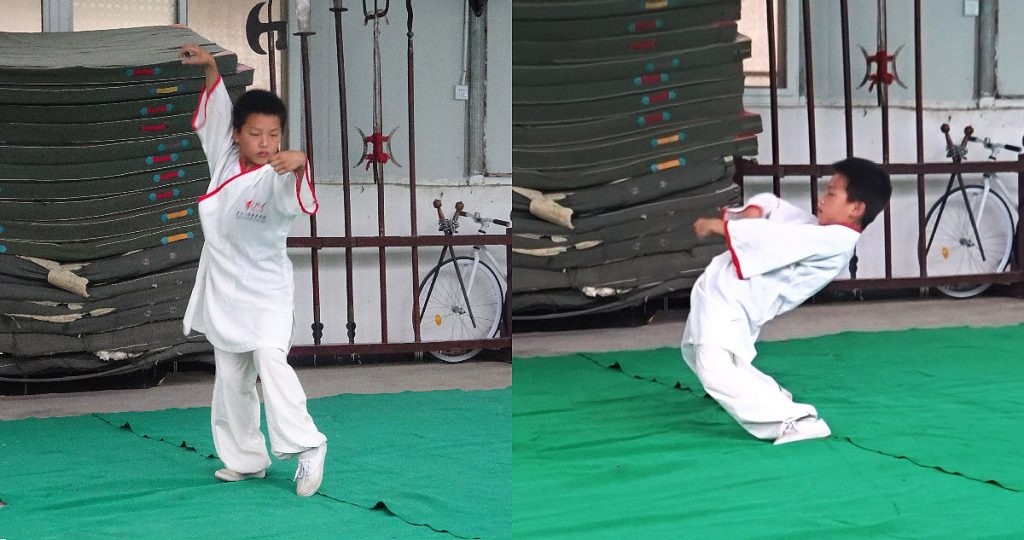
Commonly used classifications
Internal / External
Internal styles, such as Wudang Quan and Tai Ji Quan, focus on building strength from inside to outside. In the name of power transer their focus lies on the perfect alignment of the body, on muscle relaxation (the removal of unconscious tension) and they may concentrate more on the the cultivation of qi from the early beginning. External styles emphasize on building external, physical strength first, sometimes by hardening the body by subjecting it to kicks and punches. Examples are Shaolin and Chang Quan. Note that ALL styles, whatever their classification, employ a mix of external and internal techniques.
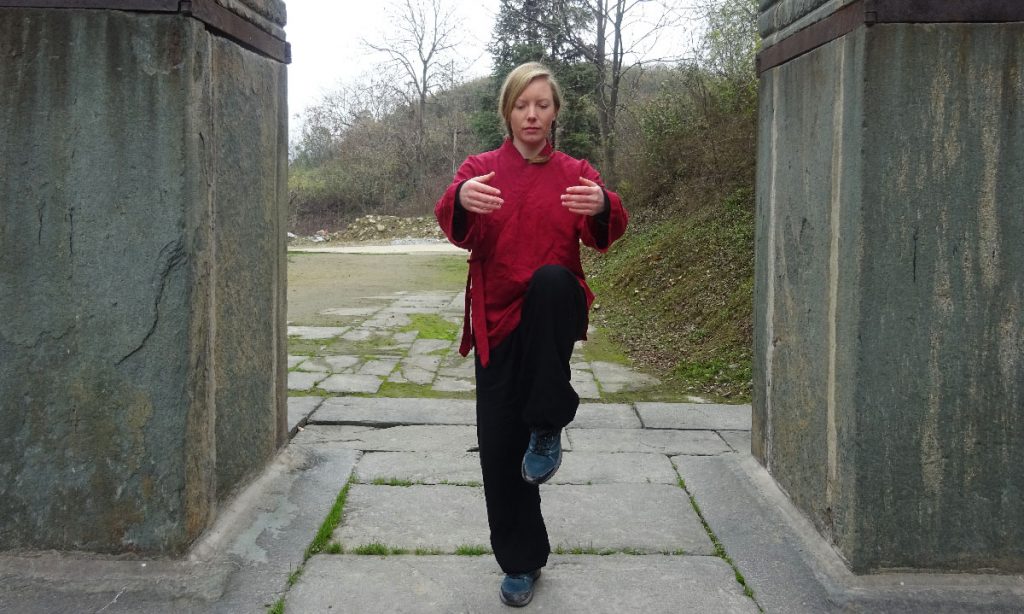
Northern / Southern
This is the most used geographical classification, referring to the place of origin of the style (above or below the Yangtze river). Northern styles focus more on speed, power and high jumps. Examples are Shaolin and Monkey styles such as Da Sheng Men. Southern styles put more emphasis on strong stances and hand and arm technique. Examples are Wing Chun and Choy Li Fut.
Animal styles
These are the styles specifically based on observation and imitation of nature and the animal kingdom, a reputable part of kungfu history. Examples include Praying Mantis Fist and Tiger Fist.
What is Qi?
The concept of Qi is a lot more simple and easy to understand than many make it sound. There’s a paralel here with the science of physics, which seeks to explain the universe. Quantum physics explains to us that on the smallest level, everything (you, me, the wall, steam rising from hot water) is made up of energetic vibrations. A long long time ago, well before the start of our calendar, the Chinese masters of their time came to a similar conclusion. They observed a unity, an interconnectedness, throughout the universe and named this connection – you guessed it – Qi.
Qi translates as energy or breath. In Traditional Chinese Medicine, qi is seen as the vital energy belonging to each living organism. The basic concept is that the more qi you have and the better you can utilize it, the healthier you are and the better you will function in everything you do. Qi can be cultivated through different practices. One of those practices is Qi Gong. Qi Gong is a health system employed by kungfu practicioners (amongst others) that makes use of coordinated, slow movement and breathing to balance and cultivate Qi. During Qi Gong practice our shifu will sometimes walk by, laugh and rub his belly, indicating where we should be feeling the energy. In our lower dantian, our energy center.

Do I experience Qi and if what’s it like?
Yes, I experience qi. By exercising and learning movement with a focused mind for the last four months, my bodily perception has changed. I am more aware and more focused on my breath, on my body, on the connection between body and mind. I try to employ attention first, then intention. I feel qi both as my breath and as a sense of awareness in my body. Sort of a vibration, a connection, between body and mind if you will. Now I’m a novice and I only just starting to learn how to tune in to my body. My focus tends to drift a lot and sometimes I wonder if what I’m feeling is not just my imagination. But I know that this connection is primarily what helps me improve my practice, so I call it qi and I will keep on cultivating it to see where it brings me.
Who knows, maybe one day I’ll be able to shoot fireballs from my hands ⚡⚡
Conclusion
There’s a lot more to talk about introduction wise such as basic training and stances . But I think I’ll make seperate posts out of those subjects, because there’s just too much to write about and I don’t want to drown you in content.
I’ve kept it very basic, but I hope I’ve given you a little bit of an insight into the art of kungfu. Remember that for the individual practitioner kungfu can be whatever you want it to be. But essentially the essence of traditional kungfu, whichever style you choose to practice, is the training and cultivation of body, mind and spirit and to live your best life.